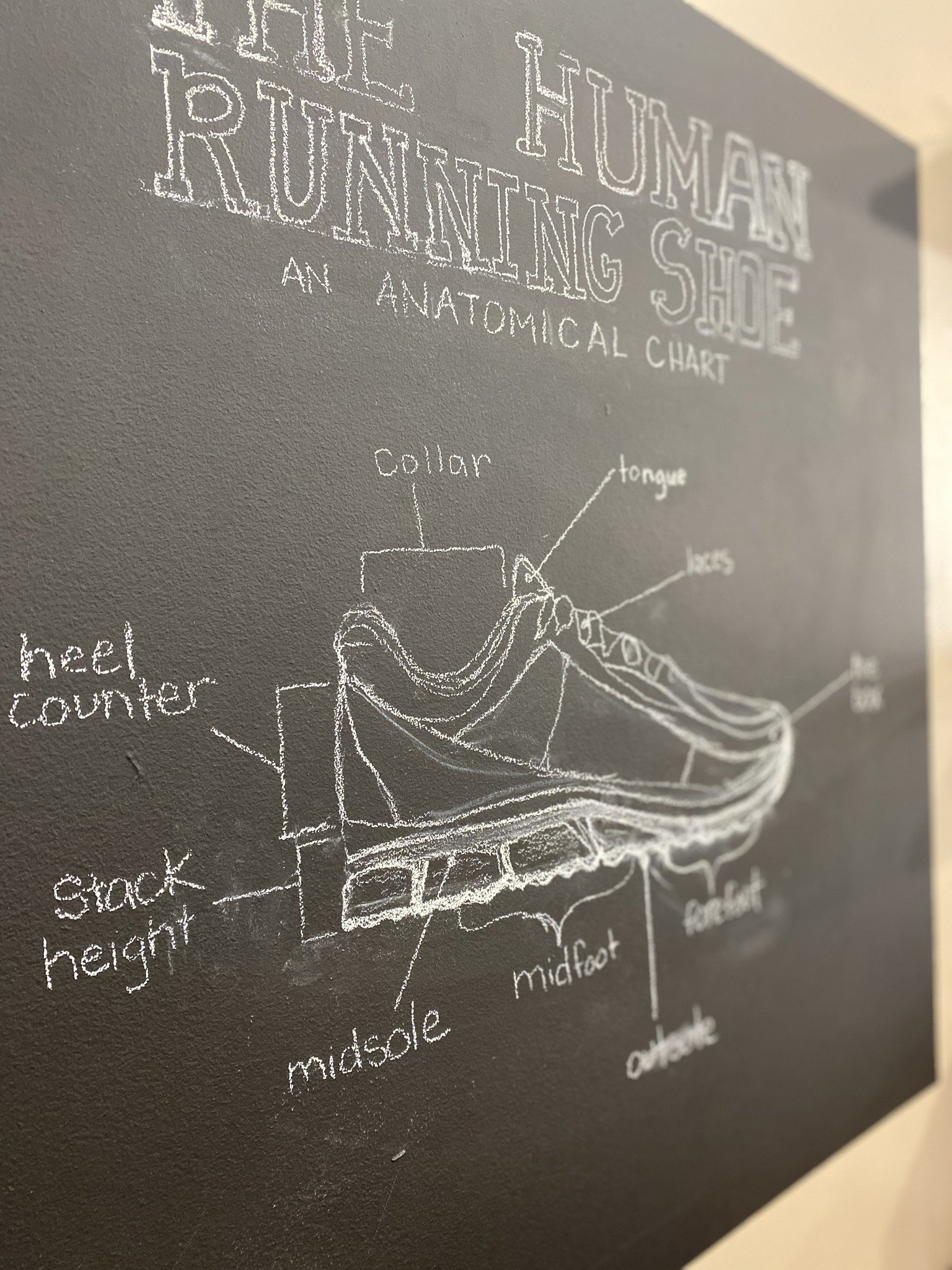What's In a Running Shoe, Other Than Your Feet?
I have the fun opportunity of talking to people about running every day. I can help them find the right gear, give some training advice, and assure them that those shoes “make them look fast”.
This has also given me the inside track to a runner’s mind (no, I’m not psychic). And over the years, I’ve learned. People expect a lot from their running shoes. I mean. A. Lot.
And we all should, right? Spending $120 of your hard earned cash should not be taken lightly. (Unless you’re going out to eat at a fancy restaurant, or taking a family of 5 to the movies – with popcorn. What is that made of anyway, gold?) But I digress.
So, what ARE you really paying for when you buy a quality pair of running shoes? You’d be surprised at the number of people I hear state they can’t “justify” spending money on decent shoes. But the quest for the perfect pair of $30 running shoes often ends up being more costly than you’d imagine. You’re buying shoes that “look” similar to the fancy ones, so they must be the same, right? Truth is, I have seen too many people spend far more on 5 pair of cheap shoes than they would on one “expensive” pair.
Over my years in the running shoe industry, I’ve realized that when you consider what goes into making a running shoe, what we end up paying for a shoe is really quite reasonable. I think it’s time to dispel a few myths about the price of a “good” running shoe, and hopefully save you some cash- and pain- in the long run.
So, what’s in a shoe, other than your feet? Understanding what you pay for (and what you don’t) might shed some light on the high expectations we hold for our running shoes.
- Research and development. The most important part of “building a good running shoes”, starts long before the shoelaces hit the eyelets. When you buy a pair of running shoes, you are investing in a product made by companies that consider research and development the most important part of the shoe-building process. Months- and years- are spent in these labs, examining runner’s performance. Scientists, doctors, engineers, and athletes work together to maximize the most from your shoe. Yep, a whole bunch of smarty pants people go to years of schooling, just to make you a shoe. (How nice!)
- Materials. I often hear, “how a little rubber, some mesh and shoe laces can cost so much?”. This leads many people to think that big shoe companies are just out to “rip us off”. But consider this. Companies are continuously scrambling to find the most innovative materials to make our shoes lighter, softer, more comfortable. The sole of a running shoe alone has three layers (insole, midsole, and outsole). And each layer has a team of experts behind it. Take for instance, the midsole, where most of the cushioning in a running shoe comes from. Companies develop proprietary materials which are a combination of special foam combined with “I-could-tell-you-but-then-I’d-have-to-kill you” brand-specific technologies. And that’s just the sole. There is a whole other team of experts behind the “upper” part of your shoe.
- Construction. Since the days of the local village cobbler (ah, the good ol’ days), it’s no secret that making shoes is a labor-intensive process. The more sophisticated the materials and design, the higher skill level necessary to execute its manufacturing. When a shoe company takes short-cuts in skill level regarding construction, it results in a lesser-quality shoe. Think of the last time you put together that particle board desk. Yes, it was an afternoon of reading frustrating instructions in Swedish (and invariably putting one part together backwards, resulting in a total re-build). BUT -it took a heckuva lot less time than constructing a solid oak masterpiece.
- Shipping, labor, and quality control. Most of the materials of your running shoe come from various parts of the world. That means, at some point, they have to get together to make a shoe, which means - shipping. When the final product is finished, it has to be shipped and transported to your local running store. Companies are constantly searching for cheaper labor, which is why many of your shoes are made over-seas. Your local running store pays for – and is at the mercy of – shipping costs. Quality control also influences cost. Many manufacturers test their materials with procedures developed by the Shoe and Allied Trades Research Association (SATRA), which provides devices designed to test each element of the shoe.
- Marketing. I don’t need to open your email inbox to know just how much “advertising noise” there is in our daily lives. So, how, in a world of a million choices, can a company make themselves stand out? Marketing. So, for all the athletes paid to wear a particular brand, commercials, viral videos, Facebook ads, and the like – companies ultimately have to incorporate marketing costs into overall shoe prices.






